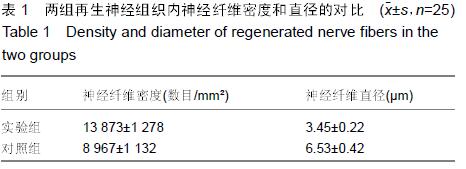|
[1] Lee GS, Park JH, Shin US, et al. Direct deposited porous scaffolds of calcium phosphate cement with alginate for drug delivery and bone tissue engineering. Acta Biomater. 2011; 7(8):3178-3186.
[2] Zandi M, Mirzadeh H, Mayer C, et al. Biocompatibility evaluation of nano-rod hydroxyapatite/gelatin coated with nano-HAp as a novel scaffold using mesenchymal stem cells. J Biomed Mater Res A. 2010;92(4):1244-1255.
[3] 胡辉.新型神经导管复合材料与骨髓间充质干细胞用于周围神经缺损的基础研究[D].广州:南方医科大学,2013.
[4] Stagg J, Galipeau J. Mechanisms of immune modulation by mesenchymal stromal cells and clinical translation. Curr Mol Med. 2013;13(5):856-867.
[5] Han J, Koh YJ, Moon HR, et al. Adipose tissue is an extramedullary reservoir for functional hematopoietic stem and progenitor cells. Blood. 2010;115(5):957-964.
[6] Strong AL, Strong TA, Rhodes LV, et al. Obesity associated alterations in the biology of adipose stem cells mediate enhanced tumorigenesis by estrogen dependent pathways. Breast Cancer Res. 2013;15(5):R102.
[7] Fukushima W, Fujioka M, Kubo T, et al. Nationwide epidemiologic survey of idiopathic osteonecrosis of the femoral head. Clin Orthop Relat Res. 2010;468(10): 2715-2724.
[8] Nakao N, Nakayama T, Yahata T, et al. Adipose tissue-derived mesenchymal stem cells facilitate hematopoiesis in vitro and in vivo: advantages over bone marrow-derived mesenchymal stem cells. Am J Pathol. 2010; 177(2):547-554.
[9] 李强,陶常波,张爱君,等.EGF刺激对脂肪间充质干细胞促血管生成作用的影响[J].中华医学美学杂志,2012,18(6):440-442.
[10] Palpant NJ, Metzger JM. Aesthetic cardiology: adipose- derived stem cells for myocardial repair. Curr Stem Cell Res Ther. 2010;5(2):145-152.
[11] 姬文晨,杨佩,张越林,等.脂肪干细胞及血管束植入法联合应用对组织工程支架体内血管化的影响[J].中国修复重建外科杂志, 2012,26( 2):129-134.
[12] Nectow AR, Marra KG, Kaplan DL. Biomaterials for the development of peripheral nerve guidance conduits. Tissue Eng Part B Rev. 2012;18(1):40-50.
[13] 胡辉,黄继锋,张伟才,等.神经营养因子体外诱导鼠骨髓间充质干细胞分化为神经样细胞[J].华南国防医学杂志,2012,26(6): 532-535.
[14] 张伟,杨宗德,易红蕾,等.聚乳酸-聚羟基乙酸神经导管和骨髓间充质干细胞构建组织工程神经[J].中国矫形外科杂志, 2011, 19(11):939-942.
[15] Takagi T, Kimura Y, Shibata S, et al. Sustained bFGF-release tubes for peripheral nerve regeneration: comparison with autograft. Plast Reconstr Surg. 2012;130(4):866-876.
[16] 程峰,郝怀勇,田和平,等.体外诱导骨髓间充质干细胞向神经细胞分化及凋亡的研究[J].南京医科大学学报:自然科学版,2010, 30(1): 54-58.
[17] 向杰,黄继锋,李德忠,等.新型仿生人工神经导管诱导犬周围神经损伤再生过程的组织学观察[J].中国组织工程研究, 2012, 16(21):3801-3805.
[18] 向杰,黄继锋.人工神经导管基础与临床研究进展[J].中国临床解剖学杂志,2012,30(5):587-589.
1[9] Kehoe S, Zhang XF, Boyd D. FDA approved guidance conduits and wraps for peripheral nerve injury: a review of materials and efficacy. Injury. 2012;43(5):553-572.
[20] 万志涛,殷义霞,王永红,等.PNGF复合材料的神经生长因子缓释性能[J].武汉理工大学学报,2010,32(12):19-21.
|



